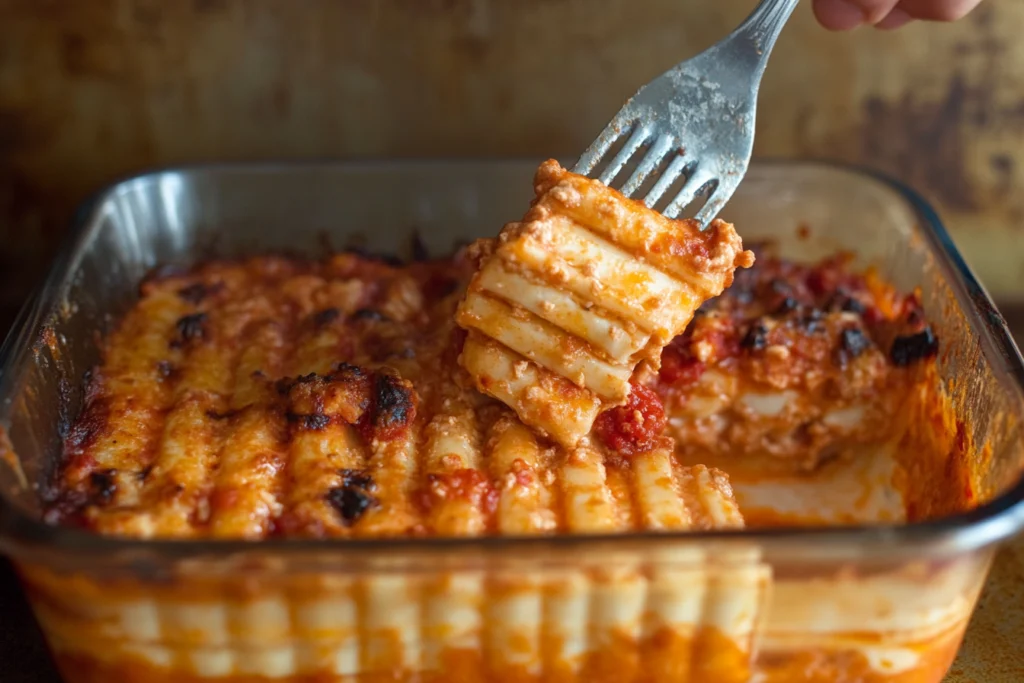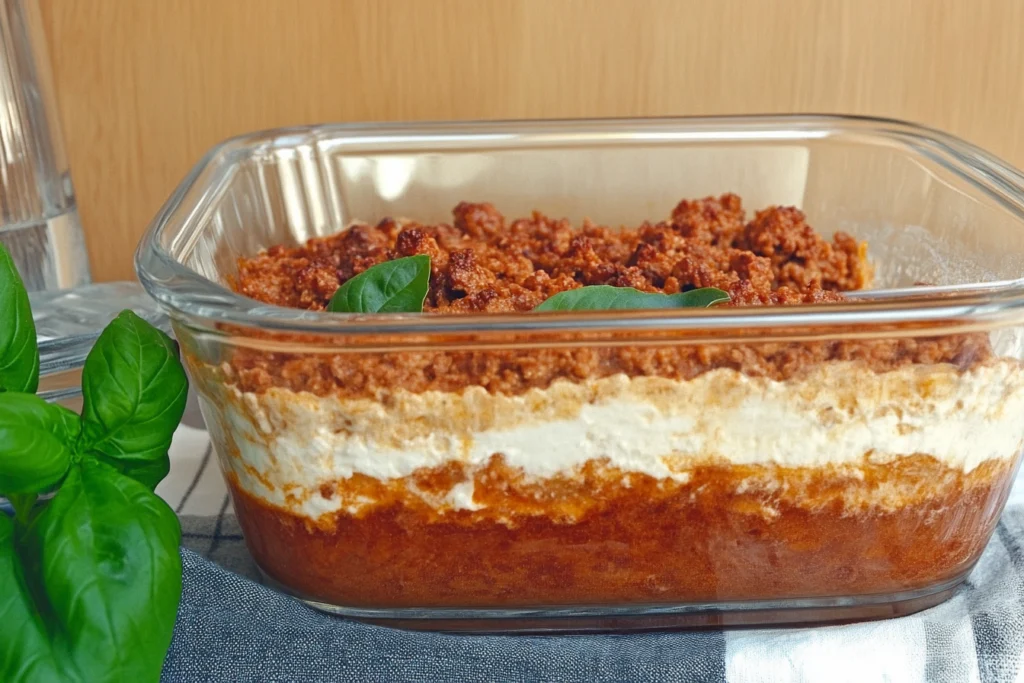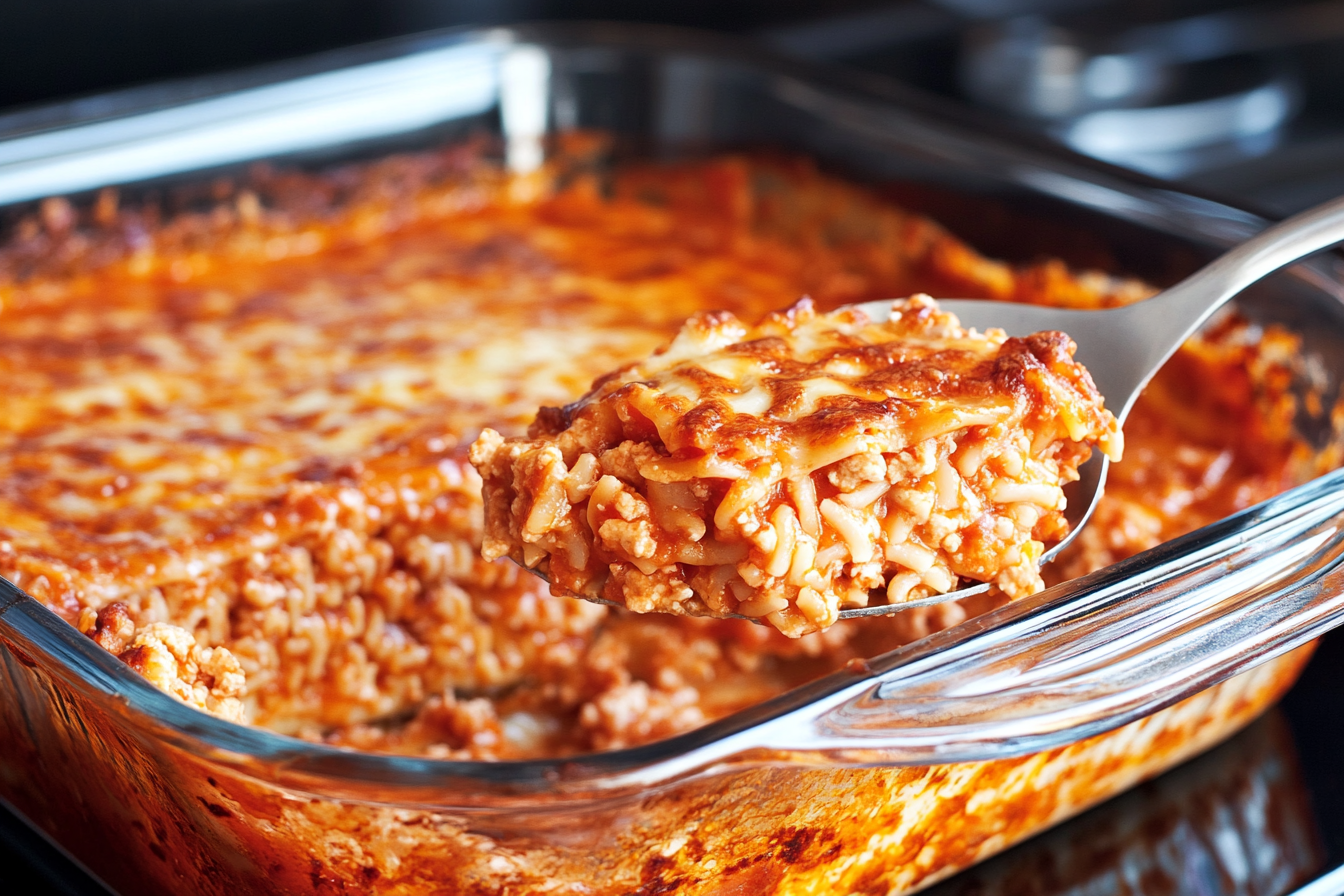Part 1: Understanding Oven Ready Lasagna
Introduction to Oven Ready Lasagna
Lasagna has earned its place as a timeless comfort food. From family dinners to holiday feasts, it’s a dish that delivers both satisfaction and versatility. Among the various approaches to preparing this layered delight, oven-ready lasagna has gained significant popularity. Why? It simplifies the process without compromising flavor or quality.
In this guide, we’ll dive deep into the art of crafting oven-ready lasagna. You’ll learn the differences between traditional and oven-ready noodles, how to choose the best ingredients, and the essential tools to perfect your recipe. Whether you’re a seasoned chef or a novice, this guide has something for everyone.
What Is Oven Ready Lasagna?
Oven-ready lasagna refers to a type of lasagna noodle that requires no pre-boiling. These noodles are designed to cook directly in the oven as they absorb moisture from the sauce. This eliminates the time and hassle of boiling water, making the process quicker and more straightforward.
Key Characteristics:
- Pre-cooked and dried to ensure durability.
- Thinner than traditional lasagna noodles for faster cooking.
- Available in gluten-free and whole-wheat varieties.

Differences Between Oven Ready and Traditional Lasagna Noodles
While both types of noodles serve the same purpose, there are notable differences:
- Preparation: Traditional noodles need to be boiled before layering, while oven-ready noodles go straight into the dish.
- Texture: Traditional noodles often yield a slightly firmer bite, whereas oven-ready noodles absorb more moisture, resulting in a softer texture.
- Cooking Time: Oven-ready noodles can save up to 15 minutes of prep time.
Benefits of Using Oven Ready Lasagna Noodles
Switching to oven-ready noodles offers several advantages:
- Convenience: Saves time and reduces prep work.
- Consistency: Ensures even cooking throughout the dish.
- Versatility: Works seamlessly with various fillings and sauces.
These benefits make it ideal for busy weeknights or when you need to prepare a dish in advance.
Ingredients for Oven Ready Lasagna
Crafting the perfect lasagna starts with choosing the right ingredients. Each component plays a vital role in creating a harmonious balance of flavors and textures.
Essential Components of a Lasagna Recipe
A lasagna recipe typically consists of:
- Noodles: Oven-ready lasagna noodles.
- Sauce: Marinara, Alfredo, or Bolognese.
- Fillings: Meat, vegetables, or both.
- Cheese: Ricotta, mozzarella, Parmesan, or a mix.
Choosing the Right Pasta Sauce
The sauce is the heart of any lasagna. Opt for a rich and flavorful sauce to complement the noodles. Popular options include:
- Tomato-Based Sauces: Classic marinara or robust Bolognese.
- Cream-Based Sauces: Alfredo or a béchamel sauce for a creamy twist.
Meat vs. Vegetarian Fillings: Options and Ideas
Your choice of filling determines the overall flavor profile:
- Meat Fillings: Ground beef, sausage, or shredded chicken.
- Vegetarian Fillings: Sautéed spinach, zucchini, mushrooms, or eggplant.
Pro Tip: Combine meat and vegetables for a hearty, balanced flavor.
Types of Cheese to Use for Perfect Texture
Cheese adds creaminess and a golden crust to your lasagna. Consider these options:
- Ricotta: For a soft, creamy layer.
- Mozzarella: For its gooey, stretchy texture.
- Parmesan: To enhance flavor with its nutty, salty notes.
Tools and Equipment You’ll Need
Having the right tools ensures a smooth cooking process.
Baking Dishes and Their Impact on Cooking
A good baking dish can make or break your lasagna. Look for:
- Material: Glass or ceramic for even heat distribution.
- Size: A 9×13-inch pan works well for most recipes.
- Depth: At least 3 inches to accommodate multiple layers.
Must-Have Kitchen Utensils for Preparing Lasagna
To streamline your preparation, have these tools handy:
- Spatula for spreading sauce evenly.
- Sharp knife for slicing ingredients.
- Grater for shredding cheese.
- Mixing bowls for combining fillings.
Part 2: Step-by-Step Preparation Guide for Oven Ready Lasagna
Preparing for Oven Ready Lasagna
Making oven-ready lasagna can seem daunting, but with a structured approach, the process becomes straightforward and enjoyable. Preparing the ingredients, assembling the layers, and mastering the baking process are the keys to success. By following this guide, you’ll achieve a lasagna that is evenly cooked, flavorful, and visually appealing.
How to Layer Oven Ready Lasagna
Layering is a fundamental step in crafting a lasagna that is cohesive and delicious. Each layer should contribute to the overall flavor while maintaining structural integrity.
Step 1: Prepping the Sauce
The sauce serves as the flavor foundation for your lasagna, and getting it right is crucial.
- Tomato-Based Sauces: A classic marinara or meat sauce works well. Simmer the sauce with garlic, onions, and herbs to enhance the depth of flavor.
- Cream-Based Sauces: Alfredo or béchamel sauce can provide a rich and creamy base. These work especially well in vegetable lasagna variations.
- Pro Tip: Make the sauce slightly thinner than usual, as the noodles will absorb some of the liquid while baking.
Transition: After preparing the sauce, the next step is to focus on the filling, which brings texture and personality to the dish.

Step 2: Preparing Meat or Vegetables
Whether you prefer a classic meat filling, a vegetarian option, or a combination of both, this step allows you to customize your lasagna.
- Meat Filling: Brown ground beef, sausage, or turkey in a skillet. Season with Italian herbs, salt, and pepper. For a lighter option, drain the excess fat after cooking.
- Vegetable Filling: Sauté vegetables like zucchini, mushrooms, spinach, or bell peppers. Removing excess moisture is essential to avoid watery lasagna layers.
- Combination: Mix cooked meat with vegetables for a balanced and hearty filling.
Transition: Once your filling is prepared, you’re ready to assemble the lasagna, where proper layering ensures a harmonious balance of flavors.
Step 3: Layering the Noodles, Sauce, and Cheese
Building the layers of lasagna is an art that combines creativity and precision.
- Base Layer: Begin with a thin layer of sauce at the bottom of your baking dish to prevent sticking.
- First Layer of Noodles: Arrange oven-ready lasagna noodles side by side without overlapping. They will expand slightly as they cook.
- Cheese Layer: Spread a mixture of ricotta, mozzarella, and Parmesan evenly over the noodles. For a creamier texture, consider adding an egg to the ricotta.
- Sauce Layer: Pour a generous amount of sauce over the cheese to cover it completely.
- Repeat the process until the dish is filled, ending with a thick layer of cheese on top.
Transition: After completing the assembly, the focus shifts to ensuring the lasagna bakes evenly and retains its moisture.
Secrets to Perfectly Moist Lasagna
Achieving a moist and flavorful lasagna is often a challenge, but a few strategic steps can make all the difference.
How to Avoid Dry Layers
- Use plenty of sauce, ensuring each noodle layer is fully covered. Oven-ready noodles are designed to absorb moisture during baking.
- Cover the baking dish with aluminum foil for the first 30-40 minutes to trap steam and retain moisture.
Transition: While moisture is important, even cooking is equally critical to avoid undercooked noodles or uneven layers.
Tips for Even Cooking
- Use a glass or ceramic baking dish for consistent heat distribution. These materials help prevent hot spots.
- Rotate the dish halfway through baking to ensure even cooking, especially if your oven tends to have uneven heat zones.
Transition: Once you’ve ensured proper moisture and even cooking, it’s time to bake your lasagna to perfection.
Baking Instructions
Correct baking techniques are essential to achieving a golden, bubbly, and well-cooked lasagna.
Optimal Oven Temperatures and Baking Times
- Preheat the Oven: Set your oven to 375°F (190°C) to ensure even baking.
- Baking Time: Bake for 40-50 minutes. Remove the foil during the last 10-15 minutes to allow the cheese to brown and bubble.
Transition: Properly covering and uncovering your lasagna at the right times is crucial for achieving the perfect texture and appearance.
Covering vs. Uncovering: When to Use Foil
- Covering: During the initial baking phase, covering the dish with foil helps trap steam, softening the noodles and melting the cheese evenly.
- Uncovering: In the final phase, uncover the dish to let the top layer of cheese turn golden and crispy.
Transition: Although baking is straightforward, occasional mishaps like soggy or uneven layers can occur. Addressing these issues ensures a flawless result.
Troubleshooting Common Issues
Even with careful preparation, lasagna can sometimes go awry. Here’s how to address common problems.
Soggy Layers: Causes and Fixes
- Causes: Using watery sauces or failing to drain excess moisture from vegetables can lead to soggy layers.
- Fixes: Thicken your sauce by simmering it longer or mixing in tomato paste. Drain sautéed vegetables on paper towels before adding them to the dish.
Transition: Along with soggy layers, uneven cooking is another common challenge that can be easily remedied.
Uneven Cooking: Prevention Tips
- Ensure that the noodles are fully covered with sauce and cheese to prevent undercooked spots.
- Avoid overcrowding the baking dish, as this can lead to inconsistent heat distribution.
Transition: Once your lasagna is baked and troubleshooting is complete, proper serving techniques will elevate the dining experience.
Serving the Perfect Lasagna
Serving lasagna might seem straightforward, but allowing the dish to rest and cutting it correctly can make a big difference.
- Resting Time: Let the lasagna sit for 10-15 minutes after baking. This allows the layers to set, making slicing easier and neater.
- Serving Suggestions: Use a wide spatula to lift portions cleanly. Pair the lasagna with garlic bread or a light salad to balance its richness.
Transition: By focusing on each step—from preparation to serving—you’ll create a lasagna that’s as enjoyable to make as it is to eat.
.Part 3: Variations and Serving Suggestions for Oven Ready Lasagna
Creative Variations of Oven Ready Lasagna
Lasagna’s adaptability allows it to shine in a variety of forms. From vegetarian adaptations to regional inspirations, there’s a version of this classic dish for everyone. Let’s explore how you can tweak and enhance your oven-ready lasagna recipe to suit diverse tastes and dietary needs.
Vegetarian Oven Ready Lasagna Recipe
Vegetarian lasagna is more than just a meat-free alternative—it’s a celebration of fresh ingredients and vibrant flavors. By using vegetables creatively, you can make a dish that’s just as satisfying as its traditional counterpart.
How to Incorporate Spinach and Zucchini
- Spinach: Sauté spinach with minced garlic and olive oil to add depth of flavor. You can also mix it into ricotta cheese for a creamy, earthy layer.
- Zucchini: Slice zucchini thinly, sprinkle with salt, and let it sit for 15 minutes to draw out excess moisture. Lightly grill or roast the slices before layering them.
- Pro Tip: Combine spinach and zucchini with shredded carrots or eggplant for a colorful, nutrient-packed filling.
Transition: For even more variety, you might consider creating unique layers with mushrooms, roasted red peppers, or seasonal vegetables.
Gluten-Free and Vegan Options
Modern dietary preferences have inspired creative substitutions that allow everyone to enjoy lasagna. By using alternative ingredients, you can craft a gluten-free or vegan version without compromising on taste or texture.
Choosing the Right Gluten-Free Noodles
- Many brands now offer gluten-free oven-ready noodles made from rice, chickpeas, or lentils. These noodles cook similarly to regular ones but may require extra sauce for proper hydration.
- Tip: Use thicker sauces to prevent gluten-free noodles from becoming too dry or brittle.
Dairy-Free Cheese Alternatives
- Opt for plant-based ricotta made from cashews or almonds. These alternatives mimic the creamy texture of traditional ricotta while being dairy-free.
- Use shredded vegan mozzarella or Parmesan for gooey, cheesy layers.
- Add nutritional yeast for a nutty, cheesy flavor that enhances the overall taste.
Transition: By combining gluten-free and vegan elements, you can create a lasagna that caters to multiple dietary needs, making it an inclusive and crowd-pleasing dish.
Regional Twists on Lasagna
While lasagna originated in Italy, it has taken on various forms across the globe. Adding regional flavors can turn your oven-ready lasagna into something truly unique.
Italian vs. American Lasagna Styles
- Italian Lasagna: Often incorporates béchamel sauce instead of ricotta, creating a lighter, creamier texture. It focuses on delicate layering and fresh ingredients.
- American Lasagna: Known for its heartiness, this version features ricotta, mozzarella, and a robust tomato-based meat sauce for a richer experience.
Adding a Mediterranean Flair
- Incorporate sun-dried tomatoes, Kalamata olives, and crumbled feta for a Mediterranean twist.
- Swap marinara for a roasted red pepper sauce to introduce a smoky, sweet element.
- Use fresh herbs like oregano and rosemary to elevate the dish’s aroma and flavor.
Transition: Experimenting with these regional variations ensures your lasagna will always offer something new and exciting for your taste buds.
Serving and Storing Lasagna
Proper serving and storage techniques help maintain the integrity of your lasagna, whether it’s being served fresh, stored for leftovers, or prepped in advance.
Side Dishes to Pair with Lasagna
To balance the richness of lasagna, pair it with complementary side dishes:
- Salads: A fresh Caesar salad or a simple arugula and lemon vinaigrette salad works perfectly.
- Breads: Garlic bread, focaccia, or a crusty baguette can be used to soak up extra sauce.
- Vegetables: Roasted asparagus, steamed broccoli, or grilled zucchini add freshness and color to the plate.
Transition: A thoughtful selection of side dishes can elevate the overall dining experience, making your lasagna meal truly memorable.
Best Practices for Storing Leftovers
- Refrigeration: Store leftover lasagna in an airtight container or wrap it tightly with aluminum foil. Consume within 3-4 days.
- Freezing: Slice the lasagna into portions, wrap each piece individually, and freeze for up to 3 months.
Freezing and Reheating Tips
Lasagna is one of the most freezer-friendly meals, making it ideal for meal prep. However, proper freezing and reheating techniques are essential to maintain its quality.
How to Freeze Oven Ready Lasagna Before Baking
- Assemble the lasagna in a freezer-safe dish but don’t bake it.
- Wrap the dish tightly with plastic wrap, then cover it with aluminum foil.
- Label the dish with the date and reheating instructions.
- Pro Tip: Freeze the lasagna in individual portions for easier reheating.
Reheating Lasagna for Best Results
- From Frozen: Preheat your oven to 375°F (190°C). Bake the lasagna, covered, for 60-75 minutes, removing the foil in the last 15 minutes to brown the top.
- From Refrigerated: Bake at 350°F (175°C) for 25-30 minutes until heated through.
- Microwave Option: For a quick meal, reheat individual portions in the microwave, covering them with a damp paper towel to retain moisture.
Transition: With these reheating methods, your lasagna will taste just as fresh and flavorful as when it was first made.
Conclusion
Oven-ready lasagna is more than just a convenient dinner option—it’s a canvas for culinary creativity. From vegetarian adaptations to regional and dietary twists, the possibilities are endless. By using fresh ingredients, layering thoughtfully, and mastering the baking process, you can craft a lasagna that’s perfect for any occasion.
Whether you’re serving it fresh, saving leftovers, or preparing it in advance, lasagna remains a timeless favorite that brings people together. With this comprehensive guide, you’re equipped to make your lasagna not only delicious but also memorable.
FAQs
1. Can I use traditional noodles in place of oven-ready noodles?
Yes, but you’ll need to boil them first to ensure they cook properly during baking.
2. What’s the secret to moist lasagna?
Use plenty of sauce to cover the noodles completely and bake covered for the majority of the cooking time.
3. Can I freeze lasagna after it’s baked?
Yes, allow it to cool completely, then wrap it tightly and freeze for up to three months.
4. How can I prevent my lasagna from being too watery?
Thicken your sauces and drain excess moisture from cooked vegetables.
5. What’s the best cheese combination for lasagna?
Ricotta, mozzarella, and Parmesan are classic choices, but goat cheese or Gruyère can add unique flavors.
6. How long should I let lasagna rest after baking?
Let it rest for 10-15 minutes to allow the layers to set and make slicing easier.
7. Can I prepare lasagna ahead of time?
Absolutely! Assemble the lasagna and refrigerate it for up to 24 hours before baking.
8. What’s the ideal oven temperature for lasagna?
Bake at 375°F (190°C) for the best results.
9. Can I make lasagna without cheese?
Yes, use dairy-free alternatives or focus on flavorful sauces and fillings.
10. How do I avoid overcooking lasagna?
Follow the recommended baking times and keep an eye on the top layer of cheese to prevent burning.

